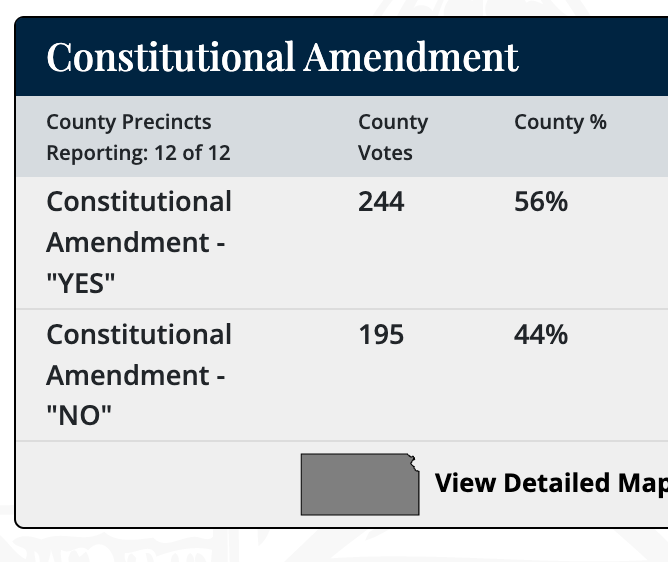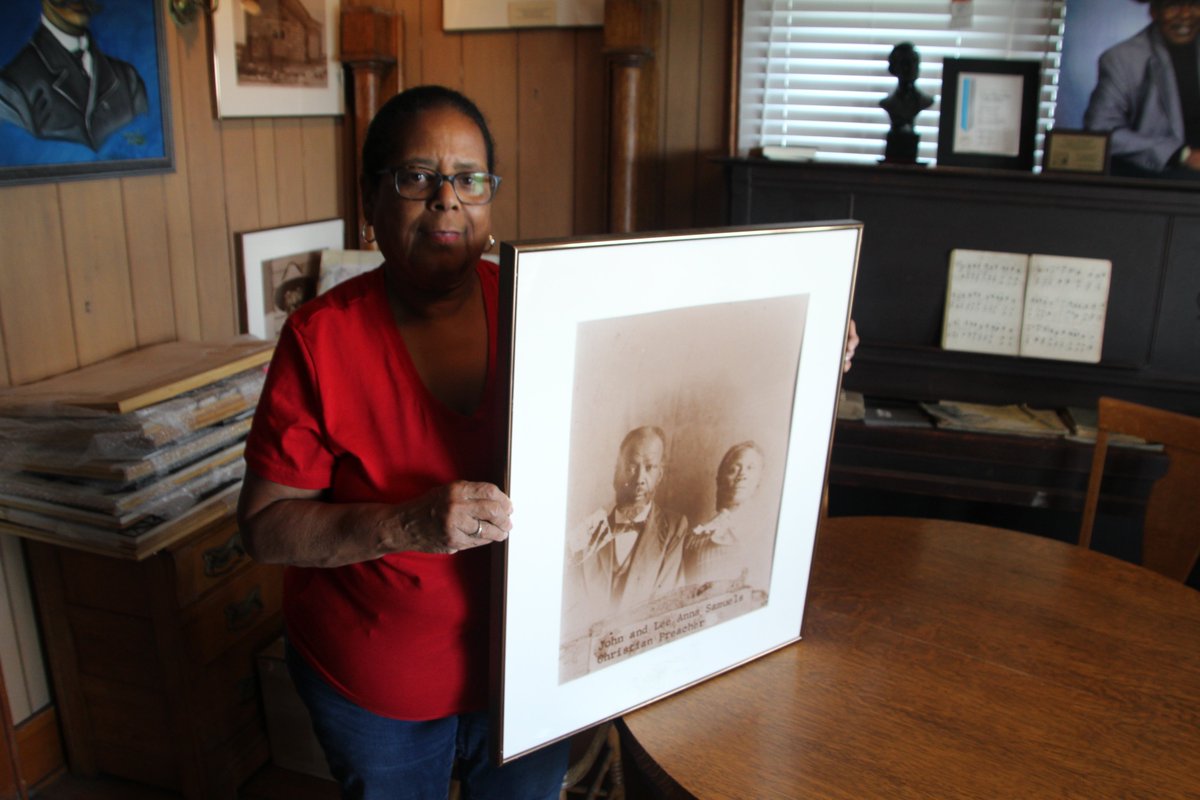
So, what can #westernkansas tell us about why the Kansas abortion amendment failed?
Even in rural, mostly conservative areas, the amendment fared far worse than Trump did in 2020
Greeley County, the least populated in the state, voted 86% for Trump and 61% Yes...a 25% swing
🧵

Even in rural, mostly conservative areas, the amendment fared far worse than Trump did in 2020
Greeley County, the least populated in the state, voted 86% for Trump and 61% Yes...a 25% swing
🧵


Same story in Hamilton County, population 2,518.
Voted 81% for Trump in 2020.
Voted just 56% Yes today.
Another 25% swing.

Voted 81% for Trump in 2020.
Voted just 56% Yes today.
Another 25% swing.


Another 25% swing in Lane County, population 1,574.
Voted 85% for Trump in 2020.
Voted 60% Yes today.

Voted 85% for Trump in 2020.
Voted 60% Yes today.


A 21% swing in Sherman County, home to the town of Goodland. With 5,927 residents, it's one of the larger counties in northwest Kansas.
Voted 83% for Trump in 2020.
Voted 62% Yes today.

Voted 83% for Trump in 2020.
Voted 62% Yes today.


Two 20% swings in Rooks County (population 4,919) and Clark County (population 1,991).
Rooks voted 86% for Trump in 2020 and 66% Yes today.
Clark voted 85% for Trump in 2020 and 65% Yes today.



Rooks voted 86% for Trump in 2020 and 66% Yes today.
Clark voted 85% for Trump in 2020 and 65% Yes today.




Here are two 22% and 25% swings in a couple of more populated counties.
Barton (population 25,493 and home to Great Bend):
Voted 77% for Trump in 2020.
Voted 55 % Yes today.
Russell (population 6,691 and hometown of Bob Dole):
Voted 80% for Trump in 2020.
Voted 55% Yes today.



Barton (population 25,493 and home to Great Bend):
Voted 77% for Trump in 2020.
Voted 55 % Yes today.
Russell (population 6,691 and hometown of Bob Dole):
Voted 80% for Trump in 2020.
Voted 55% Yes today.




I also want to point out that the amendment came within *11 votes* of losing in Seward County, population 21,964.
Seward County, home to the city of Liberal, is the most predominantly Hispanic county in Kansas (65% Hispanic).
Voted 64% for Trump in 2020.
Voted 50% Yes today.

Seward County, home to the city of Liberal, is the most predominantly Hispanic county in Kansas (65% Hispanic).
Voted 64% for Trump in 2020.
Voted 50% Yes today.


And the trend continues across #westernkansas...
Norton County: 19% swing
Trego County: 19% swing
Edwards County: 19% swing
Graham County: 18% swing
Phillips County: 18% swing
Morton County: 18% swing
Kearny County: 17% swing
Logan County: 16% swing
Gray County: 16% swing



Norton County: 19% swing
Trego County: 19% swing
Edwards County: 19% swing
Graham County: 18% swing
Phillips County: 18% swing
Morton County: 18% swing
Kearny County: 17% swing
Logan County: 16% swing
Gray County: 16% swing




Here's a map of the western half of Kansas that lays all of this out.
The darker the color, the bigger the swing... meaning the amendment to remove abortion rights got a smaller vote share compared with Trump in 2020.
Across all of these counties, the average swing was 16.76%.
The darker the color, the bigger the swing... meaning the amendment to remove abortion rights got a smaller vote share compared with Trump in 2020.
Across all of these counties, the average swing was 16.76%.

If you want to look at the numbers from each of these counties, here's a link to explore this map: datawrapper.de/_/8p9jY/
And as you may have noticed, there was an even bigger swing between people voting for Biden in 2020 (some very low numbers) and people voting against the abortion amendment.
Here's Greeley County again...
Voted 12% for Biden in 2020.
Voted 39% against the amendment.
27% swing.

Here's Greeley County again...
Voted 12% for Biden in 2020.
Voted 39% against the amendment.
27% swing.


There were 28% swings in Hamilton and Russell Counties.
Hamilton:
Voted 16% for Biden in 2020.
Voted 44% against the amendment yesterday.
Russell:
Voted 17% for Biden in 2020.
Voted 45% against the amendment yesterday.



Hamilton:
Voted 16% for Biden in 2020.
Voted 44% against the amendment yesterday.
Russell:
Voted 17% for Biden in 2020.
Voted 45% against the amendment yesterday.




And the list goes on.
Rush County: 24% swing
Voted 18% for Biden in 2020.
Voted 42% against the abortion amendment.
Sherman County: 23% swing
Voted 15% for Biden in 2020.
Voted 38% against the abortion amendment.
Similar swings in Lane (27%), Scott (21%) and Stafford (25%).



Rush County: 24% swing
Voted 18% for Biden in 2020.
Voted 42% against the abortion amendment.
Sherman County: 23% swing
Voted 15% for Biden in 2020.
Voted 38% against the abortion amendment.
Similar swings in Lane (27%), Scott (21%) and Stafford (25%).




Averaged across all 46 counties, the voting to retain abortion rights yesterday outperformed the voting for Biden in 2020 by 18.46%.
Here's another map that illustrates this dynamic county-by-county. The darker the color, the more amendment "No" voting outperformed Biden voting.
Here's another map that illustrates this dynamic county-by-county. The darker the color, the more amendment "No" voting outperformed Biden voting.

Across these Kansas counties, the voting to retain abortion rights averaged 35.07% support.
Biden averaged 16.61% support in the 2020 election here.
If you want to look at the individual county numbers, here's an interactive version of this map ⤵️ datawrapper.de/_/uGsIE/
Biden averaged 16.61% support in the 2020 election here.
If you want to look at the individual county numbers, here's an interactive version of this map ⤵️ datawrapper.de/_/uGsIE/
• • •
Missing some Tweet in this thread? You can try to
force a refresh







